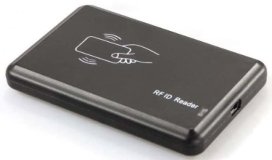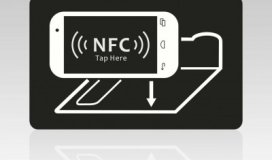Radio Frequency-Identification technology (RFID) has been gaining a lot of popularity lately. The RFID tag can be pinned to a variety of products as well as equipments which can recognize and track the product by the means of radio waves. These tags can competently hold up to 2,000 bytes of data. This RFID technology is comprised of three major components, which are- a transceiver having a decoder to construe the data, a RFID tag, consisting of information and a scanning antenna.
The scanning antenna communicates with the RFID tag by sending a radio-frequency signal. The RFID tag has to go through the frequency field of the scanning antenna. The activation signal is then detected and finally the information contained in the tag is transferred to the scanning antenna. However, the good part is, RFID tags need not to be positioned in the sightline of the scanner. Also, they can work efficiently even over long distances and are quite secure, the data contained in it can be encrypted, protected by password etc.
In today’s tech-forward world, where businesses prefer completely automatic data capture and analysis systems, be it for tracking inventory in a storehouse, livestock management or tracking equipments; RFID has greatly transformed the way things work. The RFID technology offers a simple solution to complex logistical tracking of equipment, mostly where both read and write facilities are required. Nowadays, ceramic RFID tags are getting quite popular due to the fact that ceramic is the best material available, plus these tags have improved reading distance, which is almost twice as that of an ordinary tag of the same size.
The anti-metal ceramic RFID tags can sustain extreme temperatures, approximately from -80 centigrade to 310 centigrade, which is why these tags can be incorporated with plastic products. These tags are also useful in vehicle control system, as the regular tags get fastened on the windshield screen and do not last for long, whereas the ceramic tags are much stronger. The ceramic tags can sustain varied conditions and are much more hard-wearing. The anti-metal ceramic tags can be conveniently and flexibly installed. These types of tags are widely used in oil and gas pipeline and drilling management, medical equipments etc where extreme temperature conditions are involved. The ceramic tags may be small, but they are high pressure and temperature resistant. This is the reason why, the ceramic tags are getting extremely popular in equipment.



